Before & After and a Bit of History
July 30, 2024[twenty20 img1="898713" img2="898712" offset="0.5"]
You are familiar with Iraivan's unique concrete foundation, which earned us a cover on Concrete Today magazine back in 1999. For those new to the story, after years of research and preparation, in August of 1999, the foundation of the Iraivan temple was poured.
At the time, the lead engineer exclaimed: "This hasn't happened for 2,000 years! It's historic. Not since the Greeks and Romans has such a massive placement of concrete been completed without a single crack. Not even a hairline fissure." Dr. Mehta's joy spread throughout Kauai's Hindu Monastery and the island.
The 117' 6" by 56' by 4' foundation weighs over 4 million pounds and took exactly 108 cement trucks to place. Founder and Satguru Sivaya Subramuniyaswami, who had declared it must last 1,000 years, now knew that it would.
This pioneering project was made of a special mix that reduces Portland cement by about 40% and replaces it with pozzolan coal fly ash. Dr. Mehta noted that this makes a superior concrete, stronger, more durable, harder, and even cheaper.
Its adoption by nations and industries could radically reduce the global warming problem, for which cement production worldwide is responsible for an astonishing 6%.
The temple could, in time, change how things are built on earth. And in fact, it did. This foundation inspired China to use it for their Olympic Games Stadium. And today, California requires government projects to use it in place of normal cement.
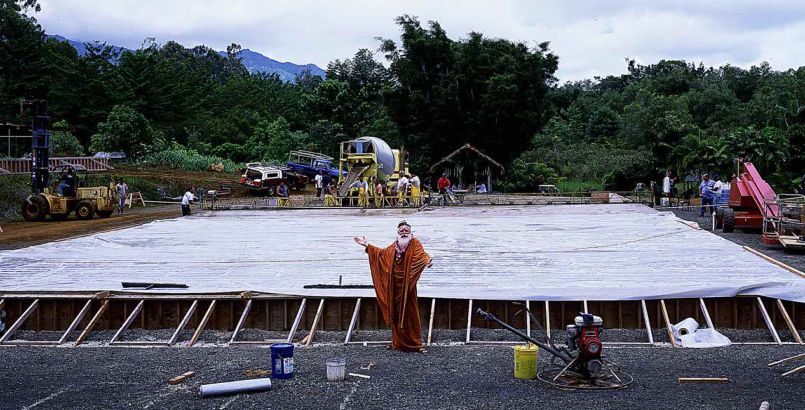
Gurudeva celebrates the accomplishment at days\
end. See Before & After Slider below. '
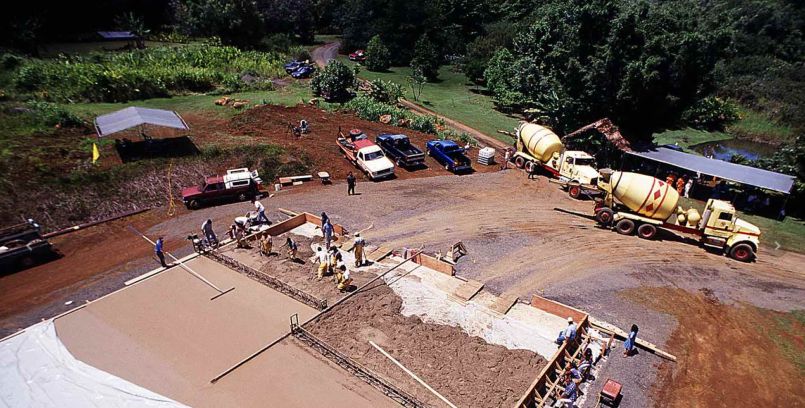
In all, 108 cement trucks were required to fill the 4-foot-deep foundation.
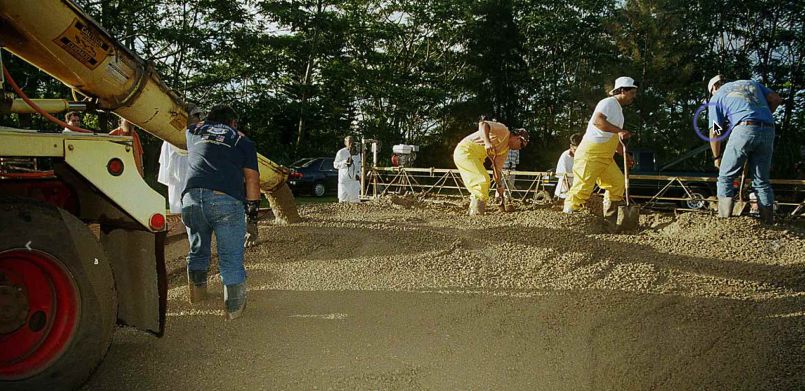
It was difficult work, requiring dozens of workers and engineers.
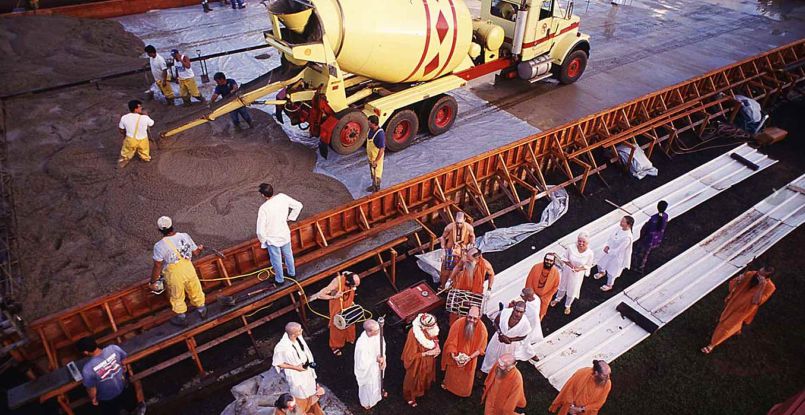
Monks and members witness it all at Gurudeva\
s side. '
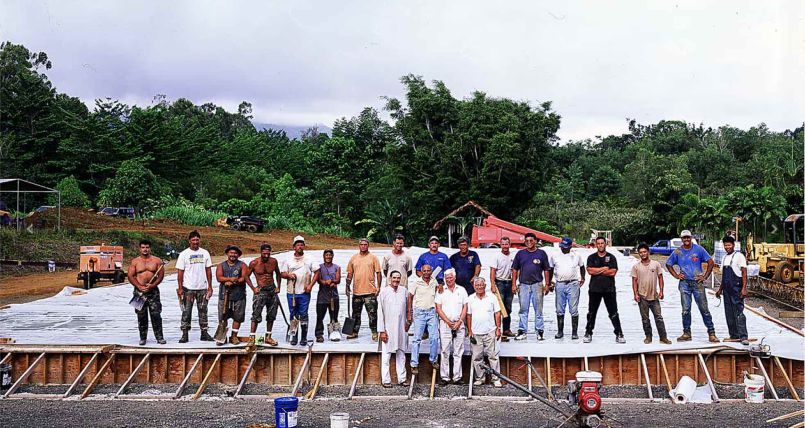
Most of the team.
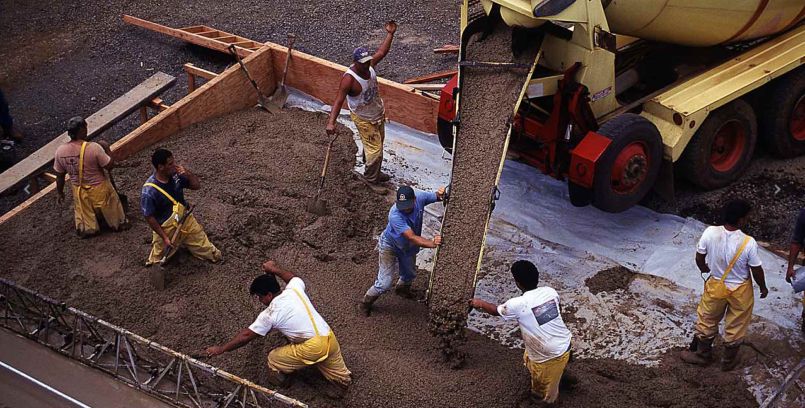
Nearing the end of the form.
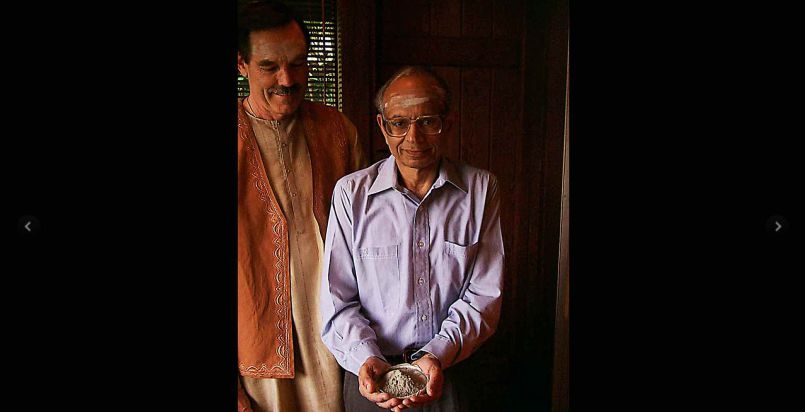
Deva Rajan with our concrete guru, Dr. Mehta, who flew to Kauai to train local concrete companies how to mix fly-ash concrete.
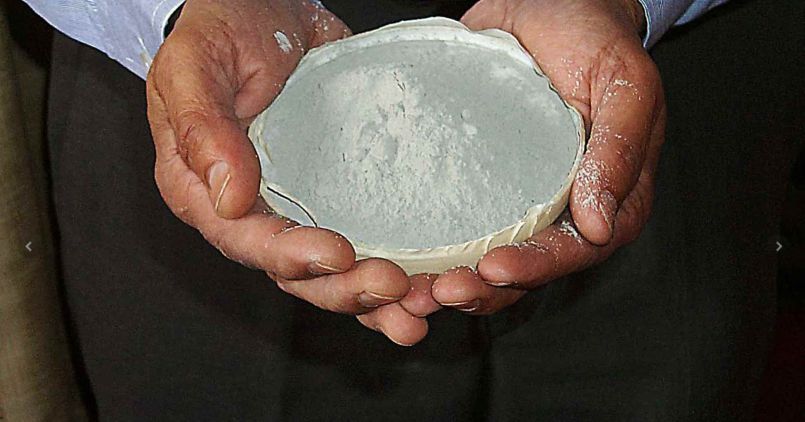
He holds a bowl of fly-ash, which is the byproduct of coal burning furnaces. It is super fine, like baby powder.
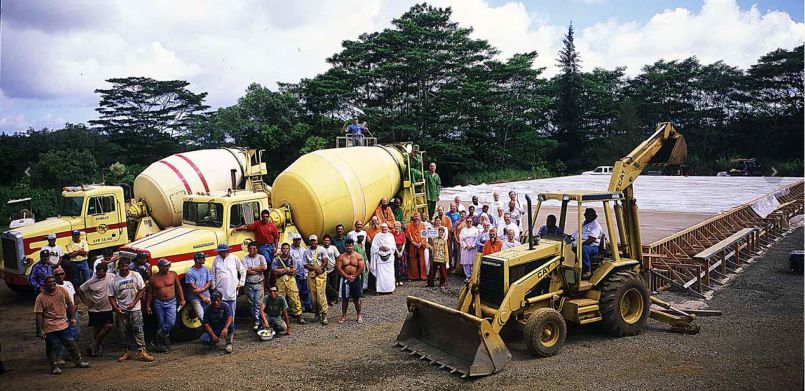
Potri, potri. Jai potri.
}
];